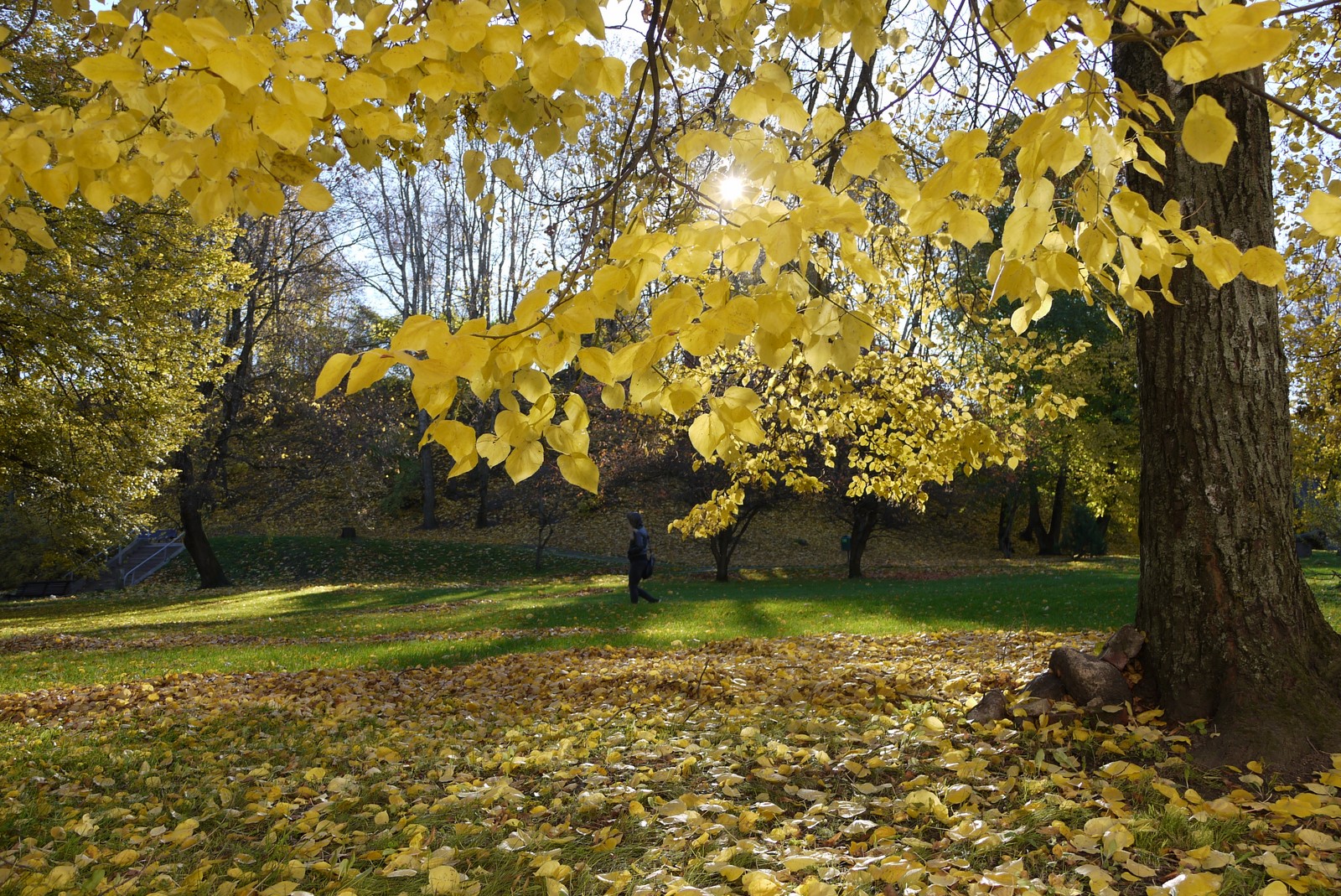One of the projects that I had been wanting to check out after seeing in several magazines and people recommending it is the Tartu Nature Building. Tartu, besides being Estonia’s second largest city (population of 98,449 with a total area of 15 sq mi. Tallinn has 432,012 and is 62.5 sq mi) is also known as the intellectual capitol of Estonia, being the location of Tartu Ülikool (University of Tartu). It is one of the oldest universities in Northern Europe, established by King Gustav Adolphus of Sweden in 1632. The city itself has a long history, first settled in the 5th century and having city rights before 1262. It is filled with parks, walks lined with trees and nestled in by a slight bend in Ema Jõgi (River). While the leaves are still in their peak of change, I thought I better head over and check it out! So mid last week I headed to the bus station for the apx. 2 hour busride across the beautiful country side to Tartu.
Besides seeing the fall colors, I had the goal of visiting the Nature Building- both which did not disappoint- the sun even came out for a little bit. What came as a big suprise to me is how much great new architecture has been built since I last visited the city, probably in 2007. They aslo provided many great examples of biophilic design. Having come to the city in search of the one great building case study- I found several and I probably even missed some! The Nature Building will have its own indepth case study, but here I will provide and overview of these 9 buildings built in Tartu since 2007. Of course I also have to include the unique building typology of any Estonian city- the lauluväljak- or festival (song) field although this was built much earlier, in stages from 1989-1994.
These 10 buildings are scattered throughout the city and designed by 8 different architectural offices, interestingly at least half of the projects started as competitions.All but Atelier Thomas Pucher and Bramberger are Estonian architects.
Compared to Tallinn (with the exception of Toompea) Tartu has a more topographical variation (in the case of the EMU Sportshall was created), which several of these projects responded to in very interesting architectural ways.
Parts of the buildings were burrowed into the site
Whereas some were raised up from the site
The site was also carved out
Bridging was used both through landscape bridges and building extensions as connectors.
Vegetation in various forms connected the inside and outside of buildings
New terrains inviting exploration were created- both through landscapes and architectural elements
Windows became fun elements dynamic elements to play with and that played with light.
Finally Tigitorn- Snail Tower became the totem by which you could orient yourself almost anywhere in the city.
Tartu offers a lot to explore, and left me surprised with the quality of interesting new projects to be found there. Below find links (by clicking on project or architect name) to websites featuring the projects with more information on the buildings , drawings and images and also to architectural firm webpages.
You can find some more images from around Tartu and also more building images in albums on my Flickr page. (click on titles).
1-Tartu Nature Building, KARISMA Architects. 2013.
2-Tartu Kesklinna School Extension. Salto AB. 2007.
3- Sports Hall of the Estonian University of Life Sciences. Salto AB. 2009.
4-Kindergarten Lotte. Kavakava Architects. 2008.
5-Tartu University. Health Care College, Kavakava Architects. 2011.
6-Tartu Rebase Street. Atelier Thomas Pucher and Bramberger. 2008.
7-Snail Tower. Künnapu & Padrik Architects. 2008.
8-Tartu University, Institute of Physics. Kadarik Tüür Arhitektid OÜ. 2014.
9- Tartu Perekodu Käopesa (Orphanage Family Homes). Rein Murula Architects. 2011.
10- Tartu Lauluväljak. Roman Smuskin.Tartu, Estonia. 1989-1994.
And of course some videos!






















































